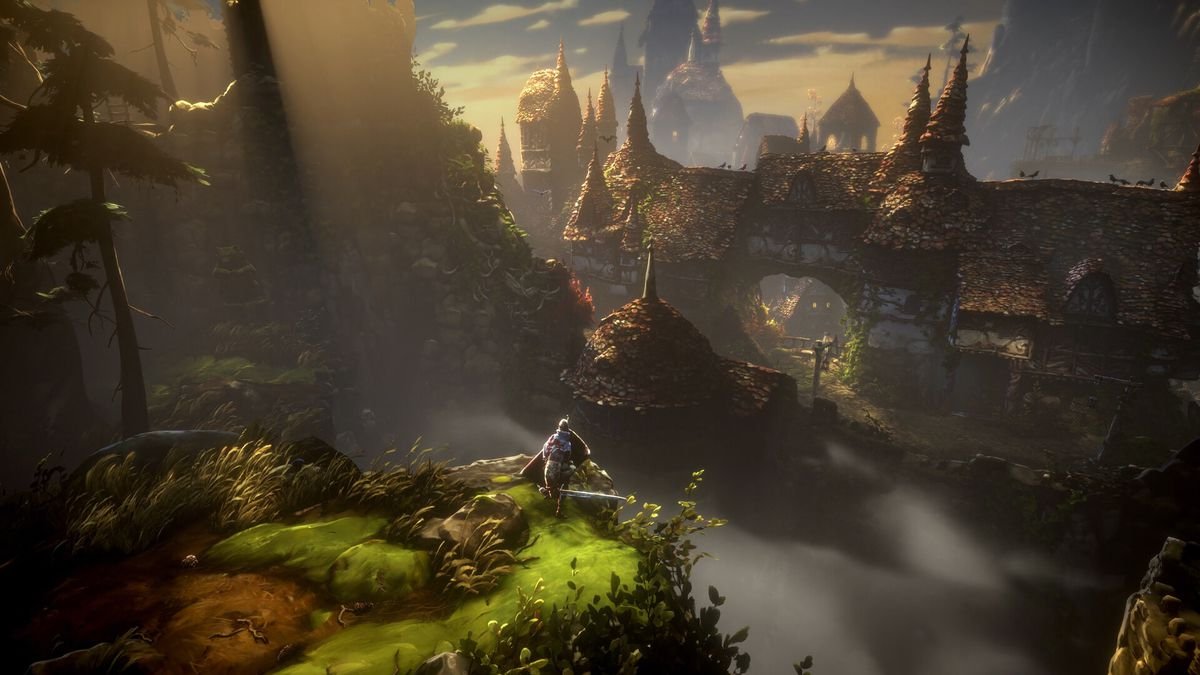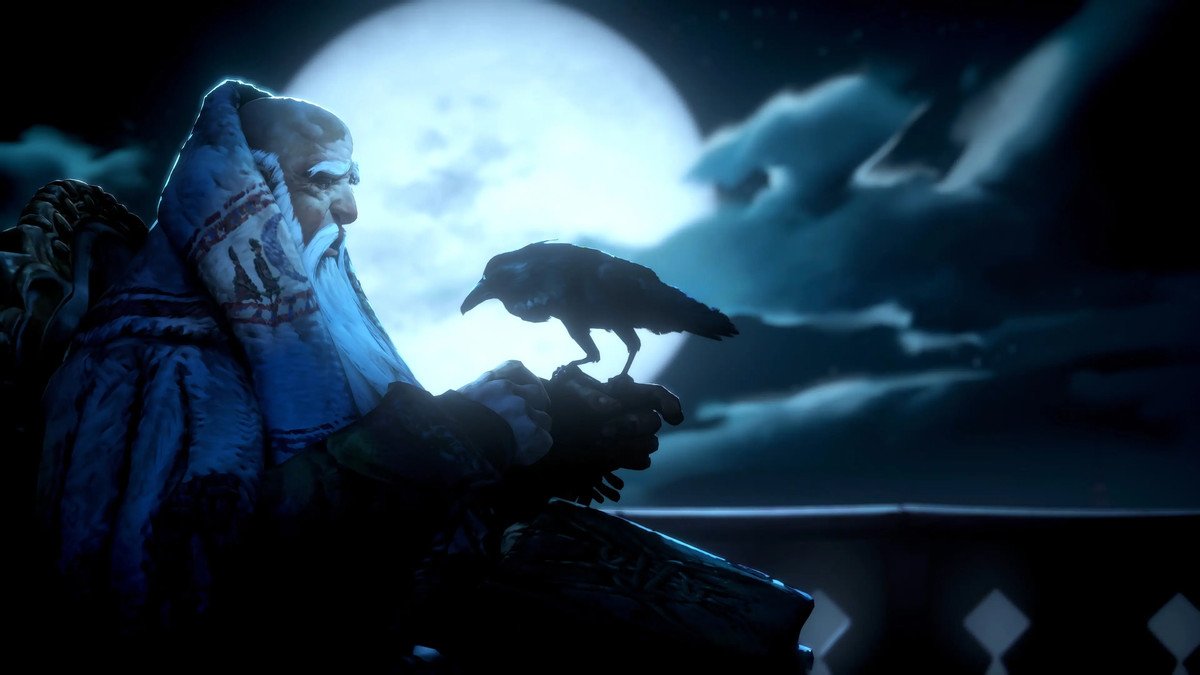No Rest for the Wicked will be a great ARPG if it can get over the hill
No rest for the wicked is boring in design. Healing items in the action RPG have a 10 second retention period after use, so you’ll die often. Every time you die, equipment loses its durability, and the cost of repairs quickly adds up. Bounty missions you do to cover them pay hugely, but that’s the job. Time and time again, the game undermines the trust you build over the course of your adventure, increasing the number of enemies and introducing new, vicious enemies, often to shake the familiarity. That frustration complements the themes of the story. However, if you look at the development of the project, it is almost justified.
Once you’ve finished creating your character, you’ll be greeted with a welcome message from developer Moon Studios, best known for Ori and the Blind Forest and its sequel. “Over the past six years, we have poured our hearts and souls into creating a next-level ARPG experience,” the post reads. The high effort is immediately palpable, with a prologue set on a ship that oozes charm and an art style that mimics a moving painting. The combat is blunt and responsive. The more I played, the more I wondered how a game that leaves such a charming impression could still be considered a work in progress.
Released on Steam Early Access on April 18 No rest for the wicked takes a top-down approach to the ARPG genre. However, this is not Diablo, but a game that is closer to Dark Souls in terms of DNA. The novelty is in the way the game is structured, using an interconnected map that you slowly uncover and move back and forth as you complete quests. Moon Studios also deals with crafting and collecting systems, adding a touch of the survival genre, right down to features like buying a house and building furniture for it.
You face these tasks as Cerim, a member of an ancient cult whose sole purpose was to vanquish a plague that once haunted the realm. Faced with yet another plague, the Church decides to act first and preach later with its Inquisition, while you’ll get side-eye at best and racist comments at worst when you show up on the island of Isola Sacra.
Image: Moon Studios/Private Division
There’s a welcoming, raw tone that permeates almost every dialogue interaction, as well as the places you set foot. The people of Sacrament, the main city of Isola Sacra, were abandoned by the neighboring kingdom where the royal family and the church live. You can chat with any fellow travelers you meet, as well as the residents of Sacrament, as the city acts as a hub. Conversations often evoke feelings about the disrepair of their home or how citizens asked for food and medicine and were sent soldiers instead. The Church’s intentions are soon called into question after its main representative first appears on screen. Regarding your special status as Cerim, one of the friendlier comments you hear is a sailor saying in your presence, “they eat, they shit, they die, just like the rest of us.”
Right now, the early access build only includes the first narrative chapter of the story, which essentially includes a few main missions and bosses, side tasks, and an endgame gauntlet that pits you against powerful enemies for equally powerful rewards. There are a few interesting swings here and there, but it’s more of a setup than anything.
Spend most of your time playing No rest for the wicked is spent hitting and dodging attacks. There are no classes to choose from; you can equip and use anything as long as you have the necessary stats (you get a few points to spend each time you level up). Weapons determine which special attacks you get access to, including magic, and they all feel very distinctive. My target was a hammer that I could light on fire and throw past an enemy before it swung back at me like a boomerang, almost always causing a brief stagger when it hit both times.
With a strong foundation for combat and exploration, Moon Studios delivers a game similar to what Lies from P offered, and what Lords of the fallen compromised on. But the barrage of hardships thrown on top of these systems doesn’t always converge to hit the Souls-like sweet spot. I defeated the game’s first main boss in one try. An hour later I got stuck trying to get back to the starting area, as a single hit from a spear from what I thought would be a low-level enemy would take down about 80% of my health. Getting decent new gear takes time and effort, or tons of money that you probably don’t want to spend because you’ll always need some savings to repair your current gear.

Image: Moon Studios/Private Division
When these roadblocks started to manifest themselves more often than I could tolerate, I took a step back to assess priorities. My healing options and equipment became the focus I needed to stop relying on the hope that I would discover things in the wild and just make them myself. However, I had to collect both recipes and blueprints, which was pricey. This led to the fun part of No rest for the wickedcurrent survival systems that translate into boring tasks.
All meal preparation reflects the alchemy mechanic of example The Witcher 3: Wild Hunt, in how different recipes give you unique buffs that can help you resist certain ailments or have an advantage in battle. Fishing is in every RPG and doesn’t drag down No rest for the wicked, especially since it naturally contributes to synergy with food recipes. It’s only when you have to search for specific animals in the wild for meat or hiding that it starts to get annoying. Or when you’re waiting for an eight-second animation of your character chopping down a tree, digging in the ground, and collecting mining ores with a pickaxe.
The biggest culprit at the heart of all this is inventory space. No rest for the wicked This allows you to upgrade it with a rare currency that is usually obtained by defeating bosses, so you won’t be doing it often. Once you have it, you have to choose between eight several categories, including both the standard inventory space and the slots you have for your character in case you want to equip multiple pieces of equipment and switch between them on the fly.
So… you’ll often run out of space, leading to throwing items away or making dozens of round trips to the city. Of course, the long-term solution involves even more participation in the survival systems. Owning and furnishing a house makes sense if you can create storage space and organize all your loot. That is, if you are prepared, or at all motivated, for the grind required to achieve this.

Image: Moon Studios/Private Division
The hatching of Dragon dogma 2 earlier this year this led to a conversation about friction, and what happens when a game is designed in such a way that it can’t be easily overcome by the player. No rest for the wicked carries the expectations of the Soulslike genre – you know you’ll die often and be put in unfair situations to test your might – but its unique impetus requires an extra effort in just about everything you do. You don’t overcome anything; you only achieve small victories.
When you consider the conditions around Sacrament, which has a mechanic rebuilding many of its facilities next to your own place, the extra effort is understandable. After all, it is a community that is slowly picking itself back up, which may have struck a chord with developers. There was a protest about it in 2022 work culture at Moonand while no action came from that internally, the game’s development was a bumpy ride. No rest for the wicked comes to Steam Early Access after six years of development – and a number of immediate hotfixes. According to the roadmap, the next two major updates will add multiplayer and “The Breach,” continuing the story. There’s no clear indication of how long the game will remain in early access on the Steam page or just a list of future features.
For all my annoyances with No rest for the wicked, I see the promise. Not since have I been so fascinated by the presentation of an ARPG of its kind Fable or Torchlight, games with different characters and art styles in worlds worth fully exploring. But I can’t help but think about the sustainability of it all, especially coming from a studio with two critically acclaimed games on the market. If Moon works on a project for six years and then immediately starts working on patches during launch weekend while entering an early access period with no end in sight, what does sustainability look like for a small studio? “Our next project will be a make-or-break moment for Moon,” CEO Thomas Mahler wrote in 2023 on X, formerly Twitter. The stakes feel high after about 20 hours of play.
The largest encapsulation of No rest for the wicked is located on the top of a mountain in the Nameless Pass. After spending a good portion of my evening slowly taking down enemy after enemy and getting torn to pieces more times than I can count, I reached the top. I excitedly ran towards the cliff hoping to find a chest. The reward was a mine ore that I don’t have room for, sitting on the edge of a beautiful view of the sunrise lighting up a lake. Perhaps sharing frustrations is an act of solidarity. I just hope that Moon’s final victory is bigger than this.
No rest for the wicked was released in early access on Windows PC on April 18. The game was reviewed on PC using a pre-release download code from Moon Studios. Vox Media has affiliate partnerships. These do not influence editorial content, although Vox Media may earn commissions on products purchased through affiliate links. You can find Additional information about Polygon’s ethics policy can be found here.
